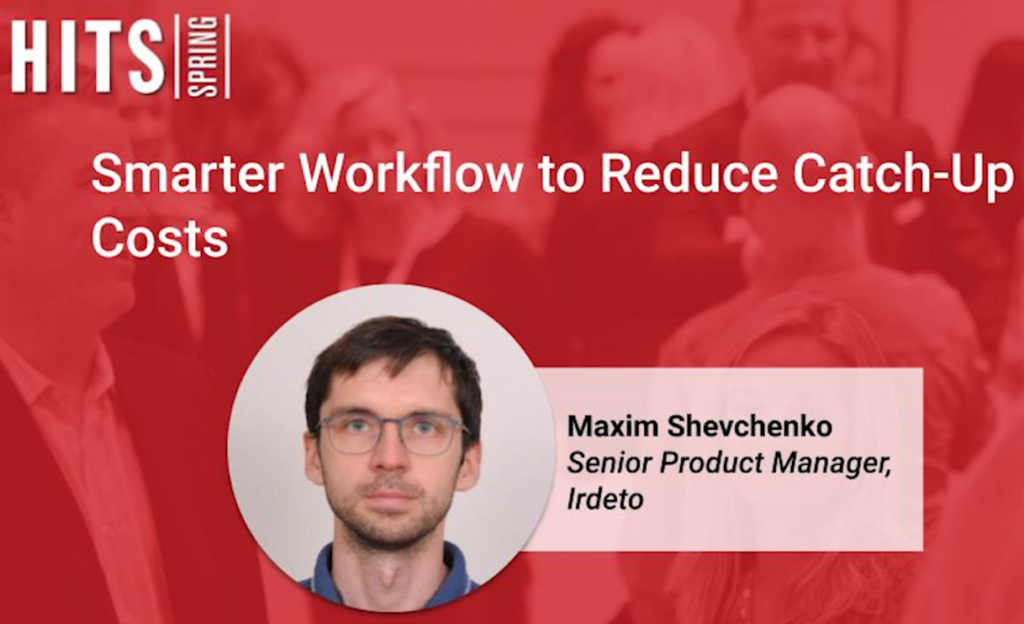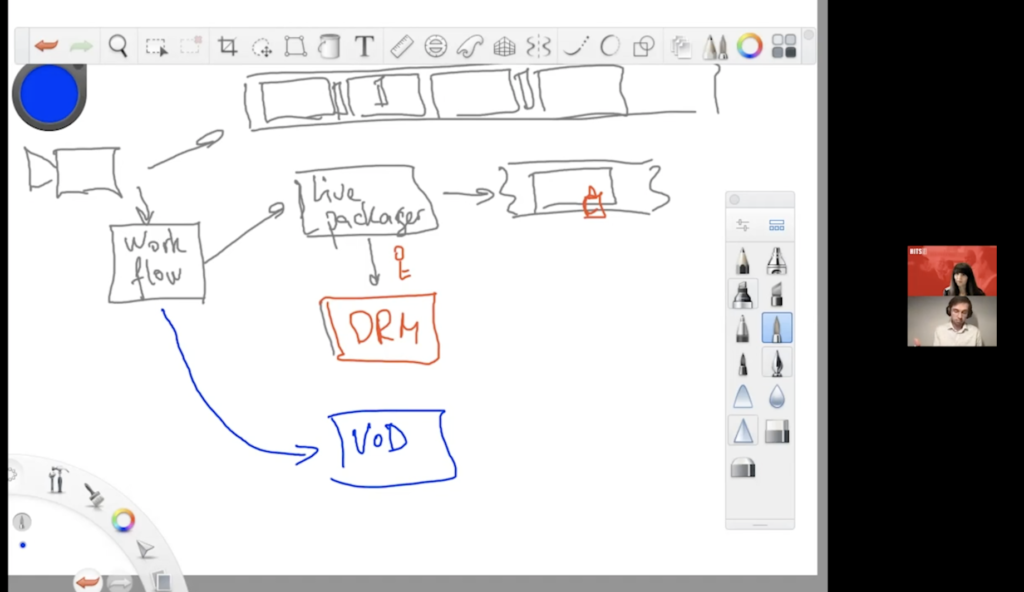
Irdeto Looks to Reduce Catch-Up TV Costs and Streamline Workflows
As streaming TV popularity continues to soar and the number of over-the-top (OTT) services continues to proliferate, the need to reduce costs associated with running these services has become crucial, according to Maxim Shevchenko, senior product manager at Irdeto.
Speaking during the Workflow & Engagement Innovation breakout presentation “Smarter Workflow to Reduce Catch-Up Costs” May 12 at the annual Hollywood Innovation and Transformation Summit (HITS) Spring event, he noted that he has been with the Netherlands-based company for about eight years and, during that time, the OTT landscape has “changed dramatically.”
 Streaming devices are now “all over the place” and the “consumption” of content has grown significantly, he said. Meanwhile, cord-cutting is “accelerating,” he noted.
Streaming devices are now “all over the place” and the “consumption” of content has grown significantly, he said. Meanwhile, cord-cutting is “accelerating,” he noted.
Compared to January 2020, there has been a 2.5 times increase in the number of protected streams and we are now seeing about a billion streams each month across the globe, he said.
One factor driving the increased popularity of streaming video is that “we are all busy people, so we all want to watch at the pace that we want and at the time that we want,” he pointed out.
Streaming usage varies depending on demographics and the type of the content he said, noting: “In different regions, we’re seeing different behavior.” For example, when it comes to sports, almost everybody wants to view games live or at least close to it.
There is also a lot of competition now when it comes to OTT services, he told viewers. Because of the increased competition, service providers need to be more efficient to be able to invest in content and improve the customer experience, according to Shevchenko.
CFOs are especially concerned that as the number of streams and viewership hours increase, the expansion, replacement and maintenance costs will outpace the revenue growth, according to Irdeto.
Content is the biggest percentage of costs for streaming services but it is hard to cut the quality of content being offered because that is what attracts subscribers and keeps them, Shevchenko explained. Services also can’t be compromised when it comes to the user experience, he said.
Most streaming platforms address live TV and catch-up TV services with two entirely separate, independent workflows, Shevchenko pointed out. This is not efficient and creates added cost, he said.
If a service is adding more live TV channels and offering more catch-up, storage costs increase but, perhaps more significantly, the infrastructure and operational costs created by the parallel packaging workflows stands to soar, Irdeto warns.
“The duplication” that we are seeing is “massive,” according to Shevchenko. So “what we need is to look at the thing a little bit differently,” he said.
 “There are technical challenges” and “that’s where we are trying to innovate,” he told viewers.
“There are technical challenges” and “that’s where we are trying to innovate,” he told viewers.
One major challenge to merging the two workflows into one is concern over service quality because changing content keys during a live broadcast might lead to a disrupted viewing experience, he explained.
“You have all these millions of devices and all of those millions of devices need to get a” digital rights management (DRM) license, so what [happens is] when you rotate the key [you] will need to request a new DRM license,” he said. “If you have 100,000 people or half a million people watching your very popular video stream and then you’re suddenly rotating the key, then all the half a million devices will come to the DRM system and say ‘give me a license’ and… they will do this in a really short period of time, like three seconds… and then the DRM system will just melt and you start getting the black screens.”
There are “multiple solutions that we are working towards,” he went on to tell viewers.
Asked to predict where we will be 12 months from now, he said: “I’m pretty sure that we’ll have a solution. But he was quick to add: “I want to go even further” and innovate more. There has been talk about open DRM, he said, noting we “can we have one single DRM on every device” and one encoding standard potentially.
The goal is to save costs to be able to offer more content and user engagement, he said, concluding: “That’s where my mission is.”
To view the entire presentation, click here.
HITS Spring was presented by IBM Security with sponsorship by Genpact, Irdeto, Tata Consultancy Services, Convergent Risks, Equinix, MicroStrategy, Microsoft Azure, Richey May Technology Solutions, Tamr, Whip Media, Eluvio, 5th Kind, LucidLink, Salesforce, Signiant, Zendesk, EIDR, PacketFabric and the Trusted Partner Network.
